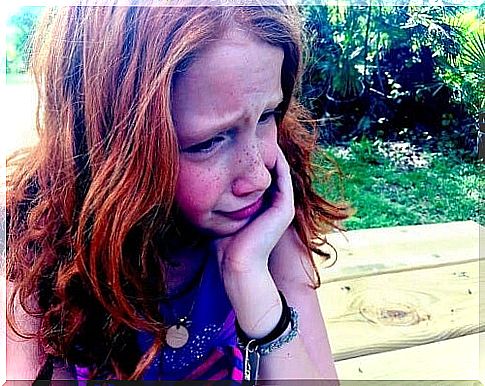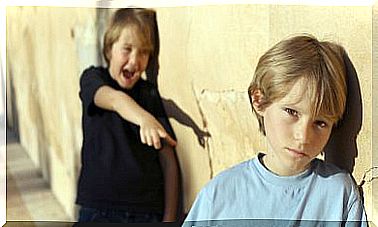Emotional Staging In Childhood Phobia

Fear is something innate to the human being. Especially in childhood, fears are necessary to begin to develop skills. However, when these create a problem in the child’s daily life, it is necessary to seek help. We are going to talk about a very effective technique in the treatment of childhood phobias: emotional staging.
Fear or phobia?
The first thing we must be clear about is the difference between fear and phobia. Fear is natural and adaptive. Throughout childhood we present various fears that prepare us to face possible situations of real risk. These developmental fears are usually similar in children of the same age and disappear as the infant grows and matures.
However, when fear is excessive or inappropriate for their age, we may be facing a phobia. According to the DSM-V diagnostic manual, phobia is an excessive or irrational fear that generates intense anxiety and leads the person to avoid this situation. In addition, it generates a great interference in the daily life of the person.
It is necessary to take into account that anxiety in children can manifest itself in the form of tantrums, hugging or inhibition.
How does the phobia arise and remain?
The origin of a phobia can be of various kinds. The most common is to acquire it after having directly experienced a traumatic situation. In this way, fear is associated with that experience and, when the situation arises again, the conditioned fear will be triggered.

On the other hand, it is also possible that the phobia appears after having observed another person experience something traumatic or respond with intense fear to some situation.
Whatever the origin, we must not forget that there are certain behaviors that reinforce this fear. For example, if after the first experience, we avoid facing that situation again, the fear will be reinforced, because we will be depriving ourselves of the opportunity to verify in a new encounter that the situation is really harmless.
On the other hand, if the parents take action to overprotect a child when faced with a child’s anxiety response , it will be more difficult to dissolve that fear, since it carries with it the secondary benefit of being comforted and approved.
What are emotional staging?
Emotional staging is a cognitive-behavioral technique that has been shown to be effective in reducing or eliminating childhood phobias.
Before starting, we must make, together with the child, an orderly hierarchy of situations that cause anxiety. Variations are used for this: a child with a phobia of dogs will feel more fearful when meeting a large dog in the street than when watching a video of a friendly puppy.
Once this hierarchy is done, the procedure consists of asking the child to choose a movie hero that he considers especially brave. Then, the phobic situation will be narrated first as it really is, and then this chosen character will be introduced into the story who, despite having the same fear as the child, will bravely know how to cope in the situation.
It is important that the child appears as a co-protagonist of the story with his hero.
Next, it will be decided who will represent each character and the story will be staged as a game. Each situation in the hierarchy will be like a chapter in the plot, progressing from the least fearful to the highest.

What do emotional staging imply?
- Counterconditioning. It is the basic mechanism of this technique. It consists in associating different and incompatible emotions with fear to a feared situation.
- Modeling . In this case, the hero or character acts as a coping model for the child. By having both the same fear, the child can identify with it and copy its modes of action.
- It is essential to reinforce each approach that the child makes towards his feared situation, both with social and material reinforcement. The token economy may be adequate for this.
- This technique helps the child to empower themselves and strengthen their self-concept.
- Being a simple technique, it can be carried out by parents after training. In this way, the effect of therapy can be amplified by working at home.









